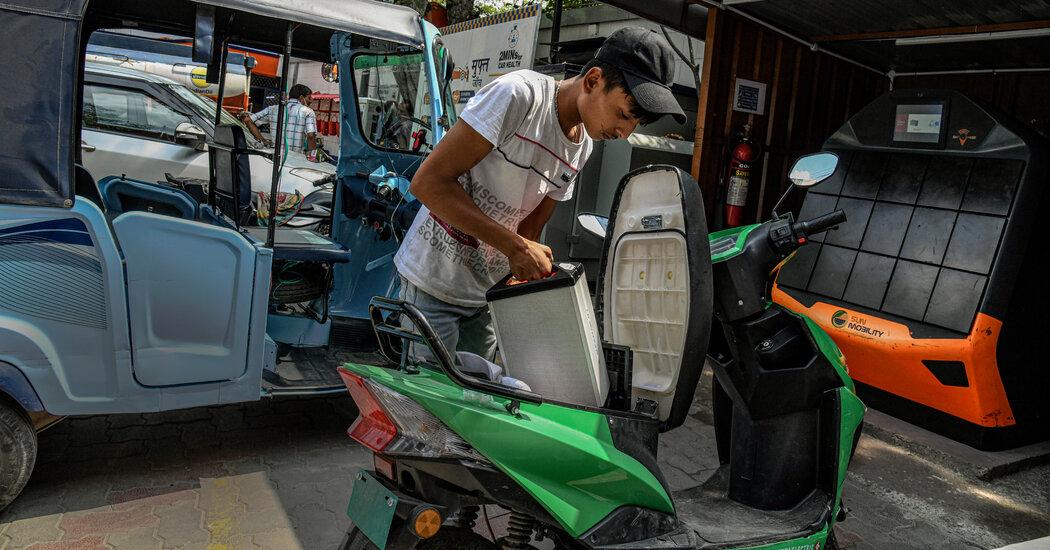In Darbhanga, a new acid-battery rickshaw, like the one Mr. Rai drives, sells for around 175,000 rupees, or $2,100. That’s half the price of a new rickshaw powered by natural gas. Charging the battery costs 20 rupees (25 cents), one-fourth of the price of filling a gas tank. The rebates seem to be working. Reliance Industries, India’s biggest company, is converting its three-wheeled cargo vehicles from gas to electric. Food delivery services are going electric as quickly as possible. Chetan Maini, whose company Sun Mobility builds charging infrastructure, said business…
Tag: Pedicabs and Rickshaws
India’s Electric Vehicle Push Is Riding on Mopeds and Rickshaws
In the United States, luxury-car buyers are snapping up Teslas and other electric cars that cost more than $60,000, and even relatively cheap models cost more than $25,000. Here in India, those are all out of reach of the vast majority of families, whose median income is just $2,400. But an electric vehicle movement is taking place nonetheless, not on four wheels, but on two and three. Electric mopeds and three-wheeled rickshaw taxis that sell for as little as $1,000 are zipping along India’s congested urban thoroughfares, cheered on by…

